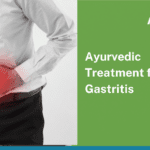Introduction
Cancer- the bane of mankind as it is, it is also the most feared malady ever. Once inflicted, it holds fast to you and it’s tough to loosen its grip. Globally, cancer has been considered to be the primary cause of close to 10 million deaths in 2020 or one in every six. The most prevalent cancers include lung, breast, prostate, colon, and rectum cancers. In the management of cancer, Ayurveda plays a supportive role. As tumor suppressants, some genuine remedies are available. Patients with cancer can relish better lives because of Ayurveda. Patients can use it as a valuable adjunct to chemotherapy or radiation treatments. In this article, let’s see how Ayurveda helps you with cancer rehabilitation…!!
A brief note on the Ayurvedic perspective of cancer
Since ancient times, the oldest system of plant-based therapy in India, Ayurveda, has been used to prevent a variety of malignancies. According to “Charaka” and “Sushruta Samhitas,” in the Ayurvedic notion, cancer is defined as a swelling, which may be either inflammatory or non-inflammatory and is referred to as “Granthi” (a small neoplasm) or “Arbuda” (large neoplasm). The three fundamentals of Ayurveda—the nerve system (Vata), the venous system (Pitta), and the artery system (Kapha)—are crucial for healthy body operation. Malignant tumors are caused when all three systems (Tridoshas) lose control and cooperation, resulting in tissue destruction and a severe state.
According to Ayurveda, every person’s body contains malignant cells. When it reaches a physiological condition, it only starts to cause problems or turn into a significant medical problem. Surprisingly, however, Ayurvedic procedures and herbal remedies are effective in treating life-threatening diseases like cancer. Modern cancer therapies, which are notorious for having toxic pharmacological side effects, hope for a flawless solution from the complementary and alternative medicine (CAM) system.
Let’s scroll through the Ayurvedic mode of treatment
Finding the root of an ailment is the major objective of Ayurvedic therapy, which is classified into four categories: Prakritisthapani chikitsa (health maintenance), Roganashani chikitsa (curing diseases), Naishthiki chikitsa (spiritual approach), and Rasayana chikitsa (restoring normal function). The hardest aspect may be changing eating and living habits, which are one of the factors contributing to the imbalance. Healthy eating habits show a substantially higher rate of recovery. When you are receiving cancer therapy, Ayurveda places a strong emphasis on nutrition or a balanced diet (Pathya). Food that is warm, oily, and light is typically desired.
Certain herbal drugs aid in complete recovery and lessen side effects along with cancer-related problems. Numerous plants have been shown to have anticancer properties, including Pippali (Piper longum), Haridra (Curcuma domestica), Shyonaka (Oroxylum indicum), Draksha (Vitis vinifera), Surana (Amorphopallus campanulatus), Upodika (Basella rubra), Shigru (Moringa oleifera), Guduchi (Tinospora cordifolia), Bhallataka (Semecarpus anacardium), Giriparpati (Podophyllum hexandrum), Hastidanti (Baliospermum montanum), Madhuka (Madhuca indica), Vata (Ficus bengalensis), and Lasuna (Allium sativum).
Note:- A classical recipe Yavani Takra, fermented buttermilk prepared with seeds of Henbane/ Hyoscyamus niger is advised in the treatment of Cancer.
What are the general principles behind cancer rehabilitation?
While some individuals may completely recover from their illness with no visible physical effects, others may experience considerable physical impairment or handicap as a result of aggressive final therapy. Early and ongoing vigorous rehabilitation measures, including physical therapy, occupational therapy, prosthetic-orthotic devices as well as assistive equipment, should be offered to ensure rapid restoration of optimal function. Even when the prognosis for life is deemed poor, the use of rehabilitation procedures typically results in rapid functional improvement and a reduction in subjective complaints.
Not a single patient with cancer, even if they have widespread metastases, should be refused the advantages of aggressive medical care, including the proper chemotherapeutic treatment, surgical procedure, radiation, and of course; thorough rehabilitation. When provided in an integrated and timely manner, these interventions lengthen life, safeguard organs and maintain them healthily, lessen your aches and pains, and maximize self-care and mobility abilities, all of which contribute to a higher grade of life for cancer patients and help to lessen the stigma associated with the disease.
What is the need for an integrated approach?
Recent studies show that when one combines the usual therapeutic regimens with an integrative approach that emphasizes symptomatic management and quality of life, it improves treatment outcomes. The culture of medical education and practice, however, prevents widespread use or training of this technique. According to recent studies, head and neck cancer, lung cancer, pancreatic cancer, lymphoma, melanoma, prostate cancer, breast cancer, and other cancers may be prevented from spreading by curcumin by inducing apoptosis (programmed cell necrosis).
What is the Panchakarma treatment for Cancer?
Cancer patients have severe dosha vitiation. In Pravara bala (strong) patients, shamana alone might not be helpful. Pre-procedures are crucial for Bala strengthening, particularly in patients with Avara (low) and Madhyama (middle) bala.
Abhyanga and Shirodhara are two medical oil therapies used as pre-procedures that are calming, revitalising, and also help the patients build strength. The negative effects of radiotherapy and chemotherapy are mitigated by panchakarma treatments.
By cleansing the system, panchakarma therapies also aid in reducing the chance of developing cancer in the future.
Sadhyo snehana before a chemotherapeutic regimen is of utmost importance since chemotherapy and radiotherapy medications vitiate the body’s doshas, particularly the pitta dosha. The energy levels can be maintained by using external therapies like Shiro dhara, Abhyangam, Shashtika Shali Swedana, Bashpa Swedana, etc. The body’s normal cells and tissues regenerate and are more resistant to the negative effects of chemotherapy and radiotherapy. Cancer patients who have finished panchakarma say they have more energy, mental clarity, and a general sense of well-being. Additionally, many mention symptom reduction and a notable improvement in health status.
Conclusion
In Ayurveda, rejuvenation is the final stage of cancer treatment. Rasayana, or rejuvenation therapy, is a special gift that offers numerous advantages. Due to its Vaya Sthapana (anti-aging), Jeevaniya (increasing vitality), Balya (power restoration), and other benefits, Rasayana therapy is currently receiving a lot of attention in an effort to correct sustain all the 7 Dhatus and re-establish the underlying homeostatic equilibrium.
The bodies of cancer patients are examined to see if any tumors are still present after they stop taking their medications and receiving their treatment.
Thus, not all hope is lost… May future research bring out the yet-to-be-explored benefits of Ayurveda into light, so that cancer patients live on with renewed aspirations…!!





